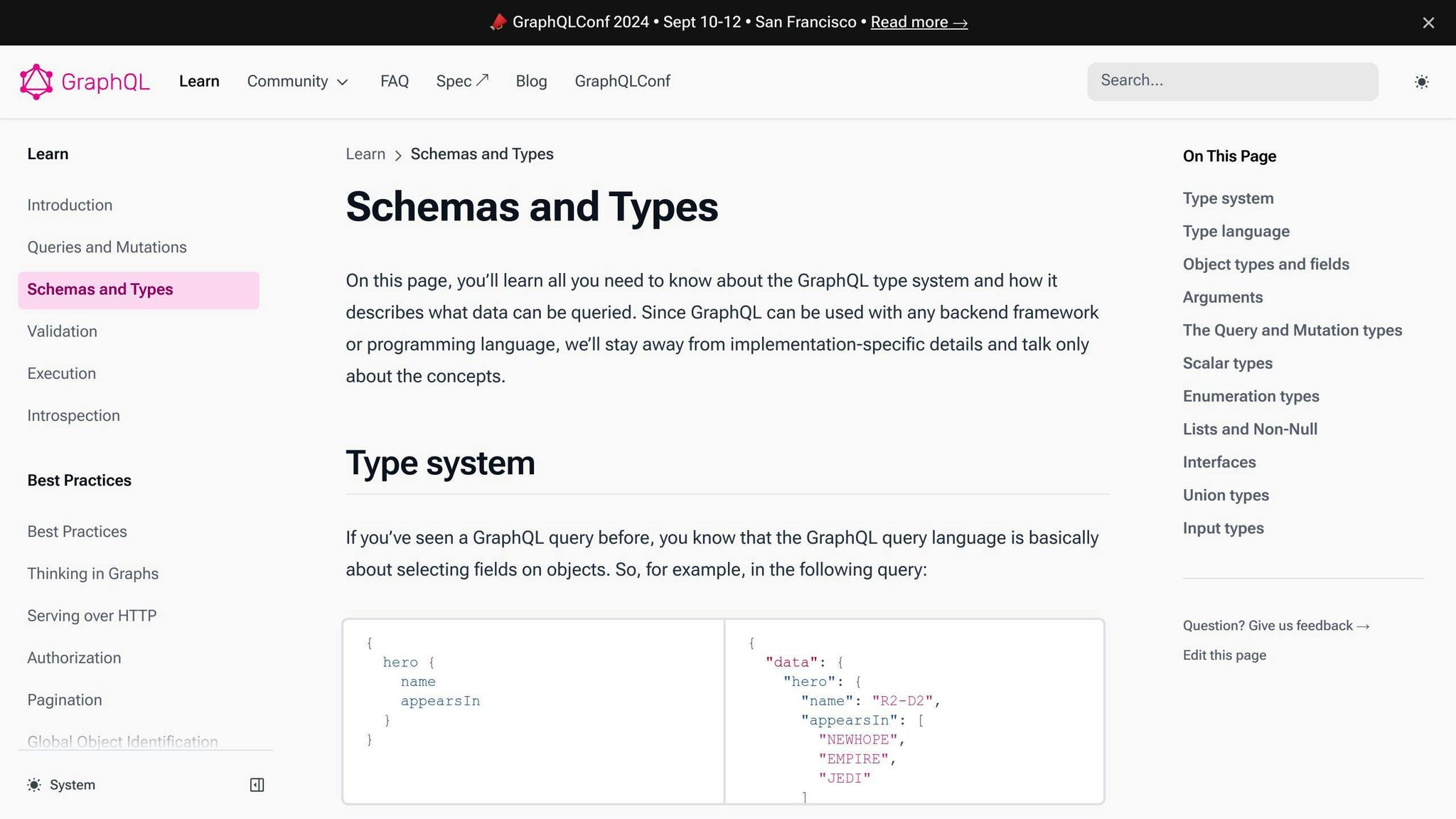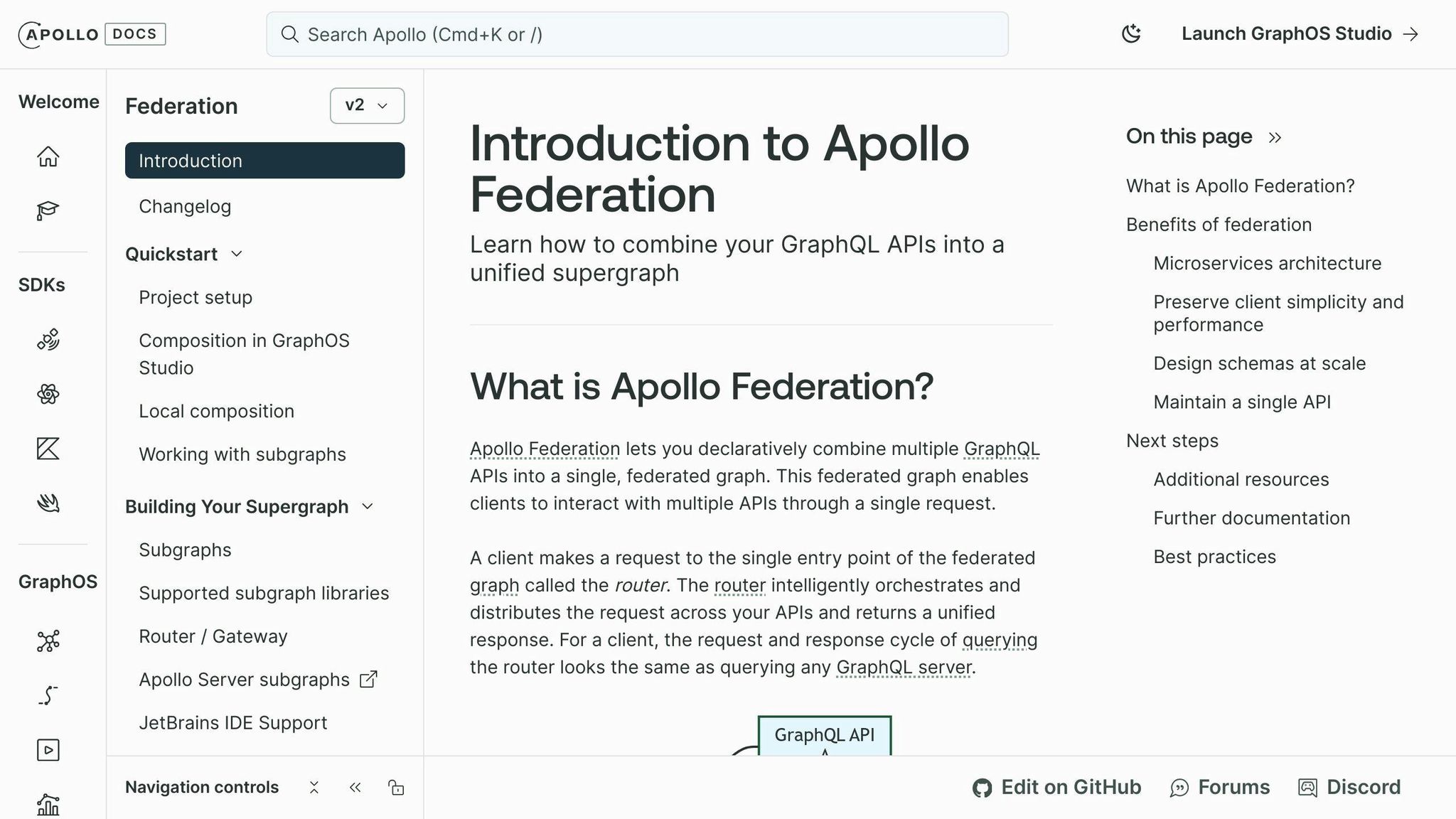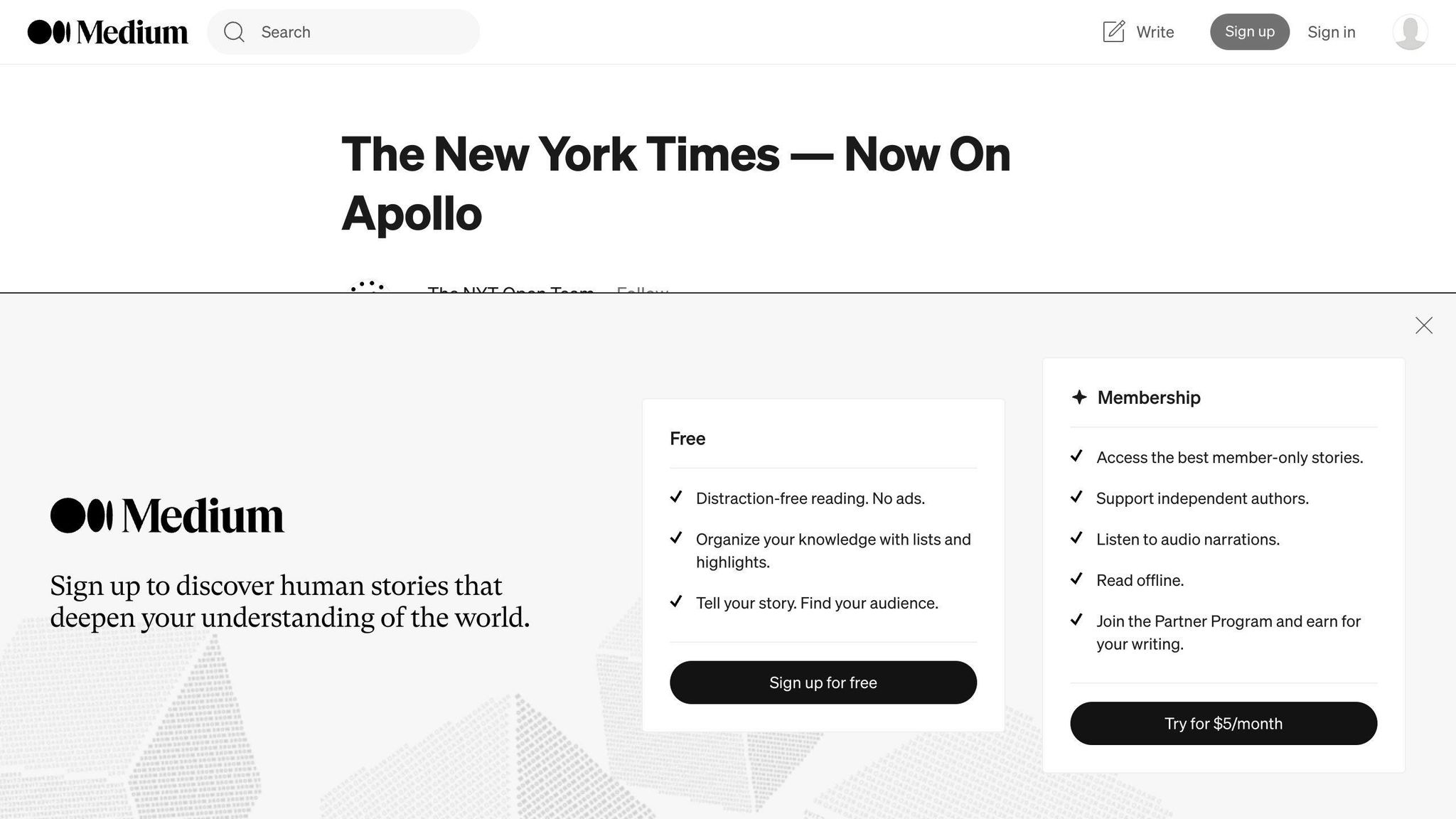


Explore the benefits of GraphQL for developer networks, including efficient data fetching, flexibility, real-time updates, data aggregation, and enhanced collaboration. Overcome challenges and learn about Apollo Federation.
If you're delving into the realm of developer networks, understanding the GraphQL benefits can significantly enhance your data handling and collaboration efforts. Here's a snapshot of what makes GraphQL a game-changer:
- Efficient Data Fetching: Request exactly what you need, eliminating over-fetching and under-fetching issues.
- Flexibility and Strong Typing: Adapt easily to changes with a schema that ensures data integrity.
- Real-Time Data Updates: Stay informed with instant data refreshes across your applications.
- Simplified Data Aggregation: Easily combine data from multiple sources in a unified format.
- Enhanced Collaboration: Smooth changes in the schema allow for faster updates and better teamwork.
GraphQL's design addresses common challenges in developer networks, such as managing data exchange, handling versioned APIs, and aggregating data from diverse sources. By offering solutions like Apollo Federation for efficient schema management and real-time updates, GraphQL facilitates better collaboration and project progress. While adopting GraphQL comes with its learning curve and optimization needs, the payoff in streamlined development processes and improved product quality is well worth the effort.
Over-fetching and Under-fetching Data
- With REST APIs, you might get too much unnecessary data or have to ask several times for what you really need. This makes communication between clients and servers more complicated and less efficient.
- Developers can find it tricky to know what data they will get back from an API, leading to frustration when they get too much or not enough.
- GraphQL lets you ask for exactly what you need, solving the problem of getting too much or too little data.
Complexity of Versioned REST APIs
- Changing versions of REST APIs can be a headache because it means managing different versions at the same time.
- When the backend changes, developers have to update how the app talks to the backend, which is a lot of extra work.
- GraphQL uses a clear and detailed schema to make it easier to understand and use data. When the schema changes, tools help update everything smoothly.
- This makes it easier to keep up with changes in the backend without having to redo a lot of work in the app.
Difficulties Aggregating Data
- Teams often need to bring together data from different places, like databases, microservices, and other APIs.
- Mixing data from different sources can be hard because they all use different formats and rules.
- GraphQL acts as a middleman, allowing all these different data sources to fit into one consistent format.
- This means front-end developers don't have to learn how to work with lots of different types of data, making it easier to create combined views of the data.
The Solution: GraphQL Benefits

GraphQL brings a bunch of helpful features to make sharing and handling data easier for groups of developers.
Efficient Data Fetching
- Using GraphQL, developers can clearly say what data they need. This stops the problem of getting too much useless data or not enough of the important stuff.
- Instead of asking many times for different pieces of data, GraphQL lets you get all you need with just one request. This makes things faster and more straightforward.
- The system checks your data request to make sure it's right, meaning you only get what you asked for. This makes sharing data smoother.
Flexibility and Strong Typing

- GraphQL's setup shows all the data you can ask for in a clear way. This helps developers know what they can do.
- The setup is strict about the kind of data allowed, which helps avoid mistakes and makes it easier to work together.
- With GraphQL, adding new data doesn't mess up what's already there. This means developers can work on different parts at the same time without trouble.
Real-Time Data Updates
- GraphQL can send new data to everyone as soon as it changes. This helps teams stay up-to-date, no matter where they are.
- Getting data right away helps developers work together better and faster.
- This also means that what you see on your screen can change right away when the data on the server does, making everything run smoother.
Simplified Data Aggregation
- GraphQL lets you gather data from different places, like databases and other services, all in one go.
- Developers don't need to learn how to handle different kinds of data. This makes building things faster and less complicated.
- You can get all your data with just one GraphQL question, without having to mix and match different pieces. This makes putting data together easy and hassle-free.
GraphQL in Action
Apollo Federation

PayPal used Apollo Federation to help over 150 teams work better together. They divided their GraphQL schema across different services, allowing teams to work on their parts independently. Apollo then combined these parts into a complete data picture.
Benefits seen by PayPal:
- Teams could make changes faster since they didn't have to wait on each other to update the schema.
- Each service managed its piece of the data puzzle, making the whole system more reliable because problems in one area didn't affect everything.
- Clients could ask for exactly the data they needed from different services, making data exchange more efficient.
With Apollo taking care of putting the schema pieces together, PayPal could create new features faster. This made it easier for teams to work together and share data, turning into a more efficient community of developers.
The New York Times

The New York Times started using Apollo to make managing and sharing content easier for both their writers and outside developers.
For authors, Apollo offered:
- A way to handle content through a central system, making it simpler to publish articles across different platforms.
For third-party developers, Apollo provided:
- Easy access to NYT content through GraphQL, helping them build apps faster.
With GraphQL and Apollo, the NYT could reach more people on the web, mobile, and within the developer community. Apollo's setup made it possible for more varied applications to use NYT content, boosting engagement.
sbb-itb-bfaad5b
Overcoming GraphQL Challenges
GraphQL is great, but it can be tricky to start using it. Knowing about these challenges and how to deal with them can make things go smoothly.
Managing Organizational Changes
When switching to GraphQL, teams need to learn new ways to work with data. Here are some simple steps to help:
- Teach your team about GraphQL with training sessions and hands-on workshops.
- Start with a small project and then use GraphQL in more areas as you learn.
- Write down how to do things, like how to design your data setup, so everyone can work together better.
- Find people who know a lot about GraphQL to help others learn.
Security and Access Control
With GraphQL, you need to think about security differently:
- Keep queries simple to stop them from overloading the system. Tools like Apollo Engine can help with this.
- Use secure tokens for logging in to make sure only the right people can get data.
- Control who can see what data with tools like Apollo Federation to keep things safe.
Optimization for Performance
Here are some ways to make GraphQL run faster:
- Use caching to lessen the load on your servers. This means storing data in a way that's easy to get back to when needed.
- Group requests together with tools like Apollo to make things more efficient.
- Keep an eye on how things are running, like how fast data is moving and if there are errors, to fix problems quickly.
- Make sure your systems can handle more work as more people use them.
With some planning, the benefits of GraphQL can really outweigh the tricky parts. Focus on taking small steps, keeping data safe, and making things run smoothly to get the most out of it.
Conclusion
GraphQL is a big help for networks of developers who want to work together better and more efficiently. It fixes a lot of problems that older systems like REST APIs have, making it easier to share information, keep everything up-to-date, and work together without stepping on each other's toes.
Key Advantages Summarized
- Efficient data fetching: With GraphQL, you can ask for exactly what you need in one go, which means no more getting too much or too little information. This makes things faster and doesn't overload the network.
- Flexibility and strong typing: The setup with GraphQL is very clear about what data you can use, which helps avoid mistakes. It's also designed so that adding new stuff doesn't mess up what's already there, allowing people to work on different things at the same time without problems.
- Real-time updates: GraphQL can send updates right away, so apps and teams can stay current without extra effort.
- Simplified data aggregation: It lets you pull together data from different places easily, so developers don't have to deal with multiple formats.
- Enhanced collaboration: Because changes in GraphQL are smooth, developers can make updates quickly without having to wait on each other. This makes working together a lot easier.
Overall, GraphQL makes it possible for developer networks to get just the data they need, see updates instantly, work independently without issues, and collaborate better. While there are some hurdles like learning new things, security, and making sure everything runs fast, the benefits of GraphQL are worth it. Starting with small projects, teaching the team about it, and keeping an eye on how things are going can help make the transition smoother.
Related Questions
What are some advantages of using GraphQL?
Some key advantages of using GraphQL include:
- Efficiency in data retrieval: Clients can ask for just the data they need, which means no wasted effort on extra information. This makes everything run smoother and faster.
- Flexibility: It's easy to update APIs with GraphQL without messing up what's already working. You can add new features without breaking the old ones.
- Developer experience: GraphQL gives developers a clear and predictable way to work with data. This makes building apps simpler and more fun.
What is GraphQL best used for?
GraphQL is great for:
- Making single-page apps that need to handle a lot of different data
- Quickly changing and improving your app
- Bringing together data from different places
- Helping developers get the data they need without a hassle
It's all about making things easier and more efficient for building apps.
What is the benefit of the GraphQL schema and strong type system?
The GraphQL schema and strong typing help by:
- Creating a clear agreement between the client and server about what data is expected.
- Catching mistakes early - finding errors when you're still working on the app, not after it's already out there.
- Generating code - you can automatically create parts of the server and client code, which saves time.
- Boosting productivity - less time fixing bugs and figuring out how to connect different data means more time making cool stuff.
Overall, it leads to less trouble and more efficient work.
What is the purpose of the GraphQL server?
The main jobs of a GraphQL server are to:
- Offer a single way to talk to different databases and APIs
- Make sure the data matches the schema and check if requests are valid
- Answer queries by getting data from the right places
- Handle logins, permissions, speeding things up, and keeping track of what's happening
- Run specific functions for different data requests
Basically, GraphQL servers take care of the tough stuff, like managing data and keeping it safe, so developers can focus on creating awesome applications.

.png)








